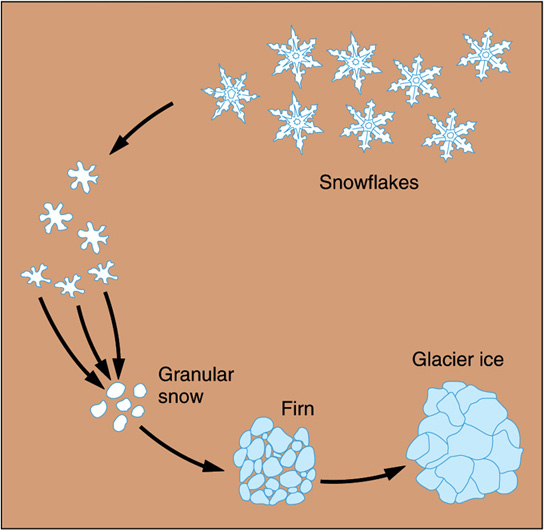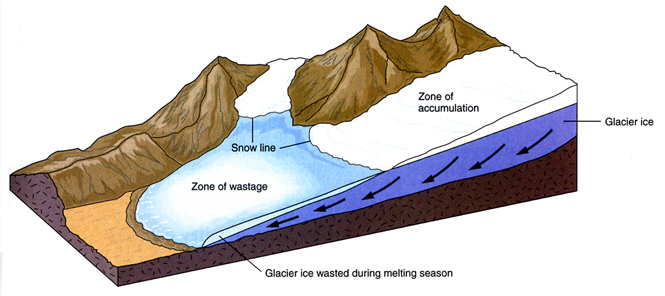


Mass balance = difference between the amount of accumulation and the amount of wastage.
A positive mass balance means the glacier will advance (accumulation > wastage).
A negative mass balance means the glacier will retreat (accumulation < wastage).
In both cases, the ice is always moving forward (downhill) due to gravity).Alpine glaciation is sensitive to climate change – the study of glaciers is important to our understanding of the causes and effects of past and future climate change.